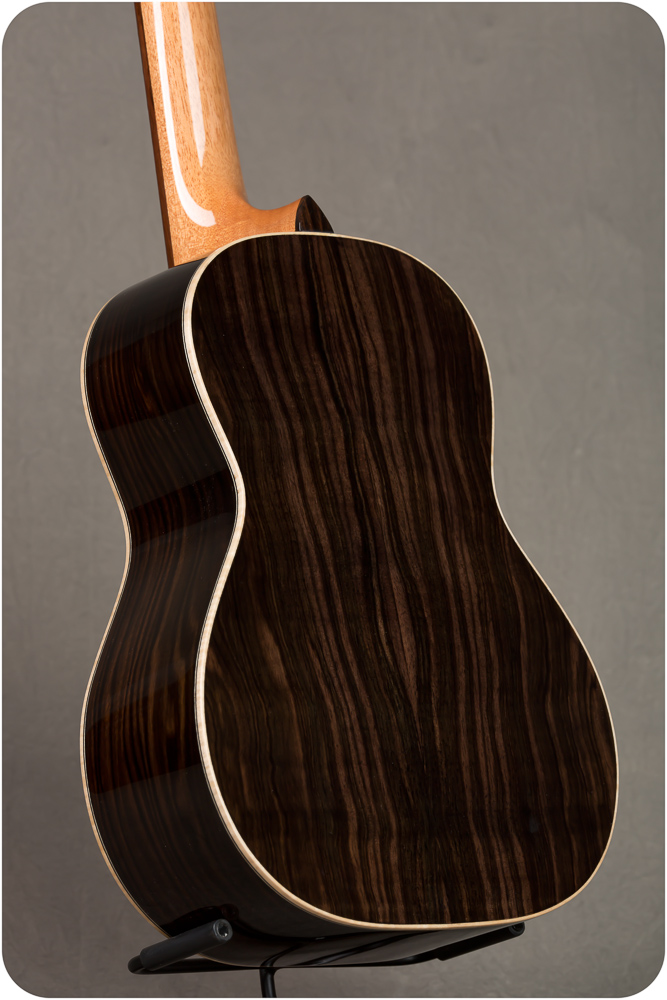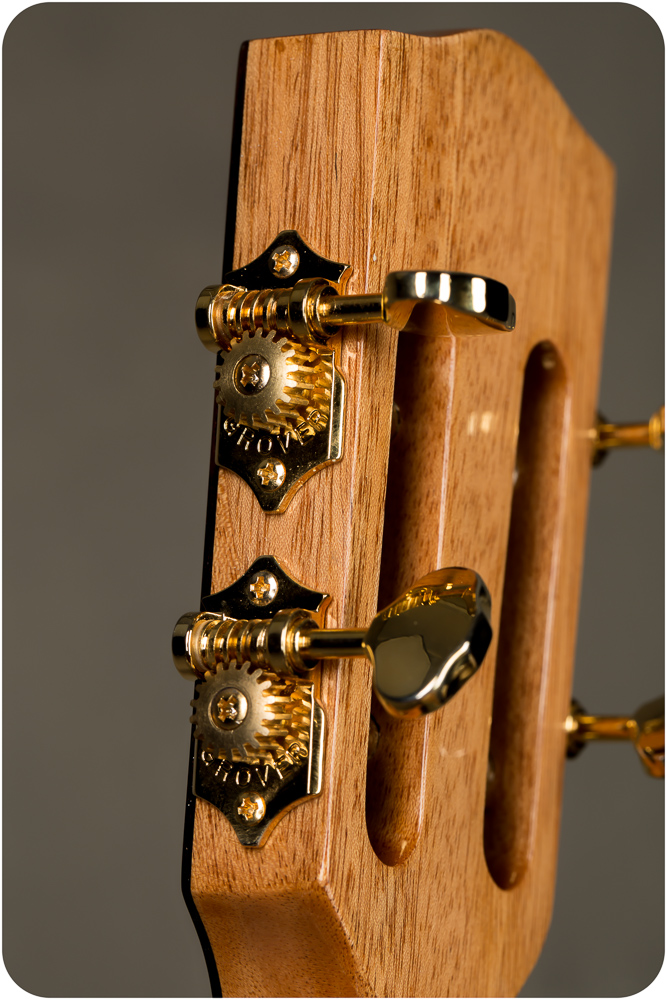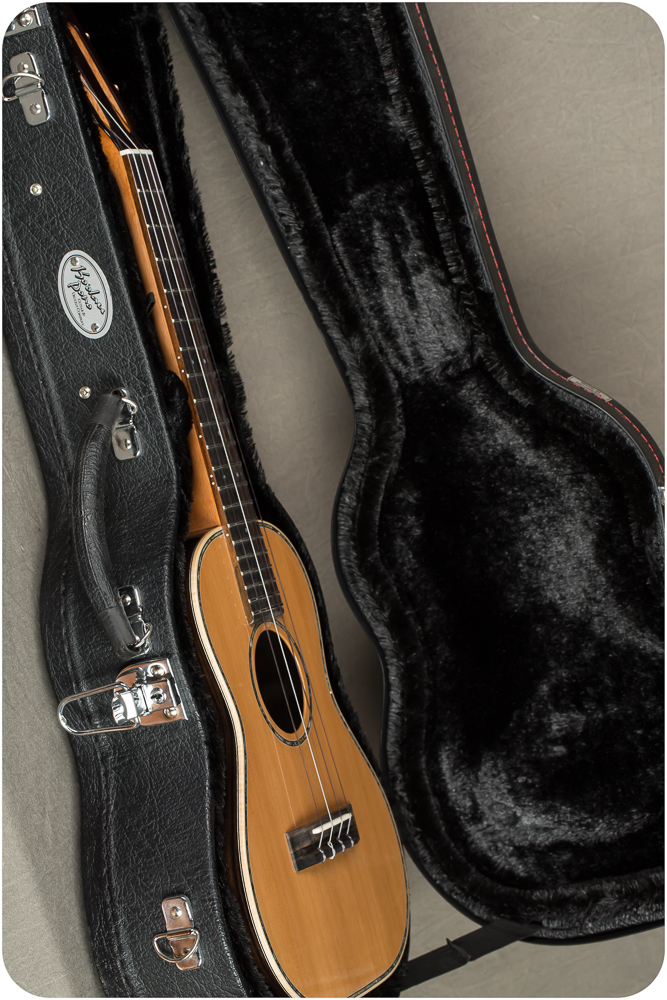I’m a huge fan of jazz, but I have issues with the genre as a whole from a guitar-playing perspective. I almost always think jazz guitarists’ tones are too muddy and that amplification isn’t always needed (if it’s needed at all). Don’t get me wrong, there are jazz bands that use a bit of gain to get some hair on the chords and it sounds exciting, but for the most part, the guitarists use their amps to drown out any treble the guitar might naturally bring to the table and it’s annoying. What is the point of playing such intricate, naturally beautiful chords if you’re just going to turn down the treble and mids and crank up the bass so you can only hear mud?
This problem doesn’t exist on the ukulele, though, since it has such a small body and scale. Even with a low G, it never gets muddy. It does get amazingly warm for a small wooden box, but never muddy. Also, since so many ukulele players play and record acoustic, that tone carries through nicely. It sounds natural and the complexity of the arrangements are able to shine through. I tell you, it’s great. Aaron’s playing displays this very well and I decided right then that, yes, I would use an ukulele to teach my kids, but I would also learn as much as I could on it myself because I wanted to play jazz like Aaron.
You can play jazz on any ukulele you want – high G or low G – but I was wondering what would make the PERFECT jazz ukulele. You would want something to put a low G on because, even though the high G makes for great rolls and jazz work, the low G can add that extra bass emphasis some chords need. I thought this uke would need low end for said bass, but also highs to balance it out. You would need something with volume and you would definitely need sustain for those ringing chords that you want to decay naturally and pleasantly. Harmonic overtones wouldn’t be bad to have, either.
Those qualities were what I began to look for as the Ultimate Jazz Ukulele, and I found them in the Pono ETSH5-PC. It’s a tenor ukulele with a cedar top and a Macassar ebony back and sides. Macassar is a wood from Southeast Asia that is expensive and tough to work with, but is sought after for musical instruments. It features straight figuring and goes well with the cedar top and curly maple binding, and makes for one classy-looking instrument.
Added to that, it has all of my other favorite features found on some other Ponos: a slotted headstock to stand out even more, an abalone rosette and purfling, a beautiful gloss finish, a radiused fretboard, and bone nut and saddle. It even comes with a high-quality case!
I went to the Ukulele Site (the web site) with no real goal but to watch a ton of videos while looking for this magical ukulele. I initially found the ETSHC-PC which has a cutaway (always tempting), but I’ve been thinking about all the great ukulele players and how so few of them use a cutaway in general. Then I watched the video for the ETSH5-PC done by Kimo Hussey and just thought “That’s it. That’s the one.”
It was everything I was after. It had low end, but not a drowning kind of low end – more like a low end that just adds to the chord – and it had a big, ringing sound with plenty of sustain. “A grand piano of an ukulele” would be a good way to describe it.
So it was strung up with the same type of strings Kimo used and I was sent on my way. Kimo was right when he gushed over the model because I immediately noticed the sustain and big, ringing chords and notes. Everything was louder than it would have been on any of the other ukes I’ve borrowed, it was incredibly easy to play due to the medium action and great intonation. It’s the kind of ukulele that is as easy to play up on the tenth fret as it is to play on the first. The fretboard’s radius is always welcome and the uke fits nicely into your arms.
The Grover tuners have an 18:1 ratio, which help for precise tuning accuracy and they are super smooth, not to mention the fact that they look great in gold on the slotted headstock.
It has been pointed out that it is heavier than most other ukuleles, and this isn’t wrong, but it’s also not that significant. Ebony is a denser wood which brings more weight to the table, but also brings a different, classic tone with it. Besides, it’s still a small box of an instrument. If people are super concerned about the weight of an ukulele, they must be blown away that other people play the guitar!
The ETSH5-PC doesn’t come with a pickup, but one can be installed easily if that’s what you’re into. I know I’m on the fence about installing a pickup since it might be handy for recording on the road and not having to worry about outside noises, but this is all very much a preference thing.
So let’s talk about the differences between the ETSH5-PC (the one I’m reviewing) and the ETSHC-PC. Both have macassar ebony back and sides with a cedar top, both have radiuses fretboards and slotted headstocks, and both are between $1,200 and $1,300.
The difference, really, is that the ETSHC-PC has a cutaway, but sacrifices have to be made for the cutaway and, while you gain the cutaway, you lose the abalone purfling that surrounds the body on the ETSH5-PC. If you go with the ETSCH5, you gain the beautiful abalone purfling, but lose the cutaway. Looking at the two and considering my observation on how so many great ukulele players don’t need or use a cutaway, I went with the prettier model and chose the ETSH5-PC and bought my own (which is basically the greatest compliment a reviewer can give). I was spoiled for choice when it came to the Ukulele Site’s stock and chose the one with the most character in the wood.
Most of the ones I saw had beautiful fingerboards that were more or less straight black, but there was one that had these lovely streaks of light brown on it ruining the “perfect” look, but I’m more than okay with this. I think it’s the imperfections – the character – that makes something all the more real and therefore more perfect to me. Since Ponos are all solid woods, I like seeing things in the wood that show off how natural it is so there’s not even a question of a veneer or picture of wood on top.
Similarly, the character goes into the headstock with a light streak going behind the “P” in “Pono,” that makes the headstock stand out a bit more. The grain on the sides is pretty tight, which helps contrast it to the curly maple binding since the stripes are perpendicular, but on the back there’s a nice chunk right in the middle where it spreads out beautifully.
Overall, this may be prettiest ukulele I’ve ever seen. The abalone surrounding not just the sound hole but the outer limits of the top may seem, on paper, a bit gaudy, but in person it contrasts so nicely with the bright top and dark back and sides, that, as Kimo says, it has a classic beauty to it.
The sound is addictive and I am constantly playing it. While not a traditional wood pairing for the ukulele specifically, cedar and ebony have been used forever in the acoustic guitar world and for good reason. That sustain, ringing notes, and harmonic overtones make for such a quality sound that to not offer it on the ukulele just because it isn’t the traditional koa/acacia would be a mistake.
So I strongly recommend you check this ukulele out. It has a rare tone that would make for a welcome addition in any ukulele collection and you couldn’t possibly wrap it in a more attractive way.









Comments 1
What a beautiful instrument and thorough review. The price really seems to be worth it for the quality. Maybe I’ll get one some day. I’ve often wondered why the tuners are sometimes like that. I understand it’s the classical guitar style, but Ukuleles seem to go either way and I can’t figure it out. Anyway, great instrument.